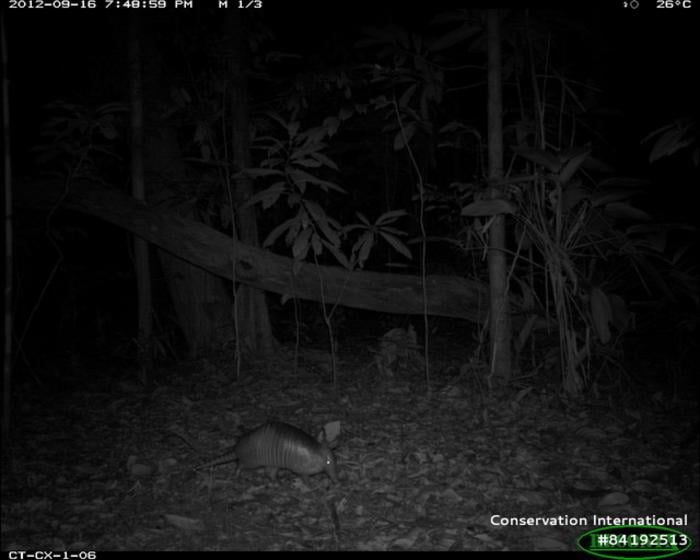A new study reveals that half of the mammal species in tropical forests adjust their behaviors in response to the moon’s phases, even in some of the darkest places on Earth.
Summary: Researchers analyzed 2.1 million images from wildlife cameras across three continents, finding that lunar illumination significantly affects the activity patterns of many tropical forest mammals, with implications for conservation and ecosystem functioning.
Estimated reading time: 5 minutes
Recent research using automatic wildlife cameras across three continents has uncovered surprising insights into how the moon’s phases influence the behavior of tropical forest mammals. The study, conducted by an international team of researchers, found that half of the species studied altered their activity levels or timing, or both, in response to the full moon.
Moonlight’s Unexpected Reach
The findings, which analyzed data from 17 protected forests in Indomalaya, the Neotropics, and the Afrotropics, suggest that even in some of the darkest places on earth – the floors of tropical forests – the moon’s phases can significantly impact animal behavior.
Richard Bischof, professor at the Norwegian University of Life Sciences (NMBU), explains the phenomenon with a simple analogy:
“Imagine playing hide-and-seek in a dark room, and then somebody lights a candle. The light, even if it is weak, may make it easier for you to find your way around the room. But if you are the one hiding, you suddenly become a lot easier to detect.”
This analogy illustrates how extra light changes the conditions for predators and their prey in tropical forests, but with much higher stakes.
Key Findings
The study analyzed 2.1 million images from wildlife cameras, recording 86 mammal species. The results revealed:
- 12 species displayed strong avoidance of moonlight during the night
- Only 3 species exhibited a strong attraction to moonlight
- Half of all species responded to lunar phases by changing their nocturnal habits, altering their overall activity levels, or both
- 30% of species showed avoidance of the full moon, compared to 20% that showed attraction
- Nocturnal species, especially rodents, were over-represented among species that avoided the full moon
Implications for Conservation
The research raises important questions about how changes in illumination affect species activity. Bischof emphasizes:
“The key takeaway from our research is that light affects animal behaviour. It raises further questions about how changes in illumination affect species activity.”
This finding is particularly relevant given the ongoing changes to tropical forest environments. Factors such as deforestation, fragmentation, and increased artificial illumination are altering light conditions in these ecosystems. As Bischof notes:
“Tropical forests, which harbour a substantial portion of earth’s biological diversity, are being cleared, fragmented, and degraded at an alarming rate. This not only results in direct habitat loss and modification but also in reduced canopy cover.”
More Light, Less Activity
One of the most striking findings is that species avoiding moonlight often do so by reducing their overall activity during full moon periods. Bischof comments on the potential implications:
“If these results extend to artificial light, loss of dark nights could curtail the amount of time animals invest into foraging and other important activities. There is a risk that we are fundamentally altering both species composition and species interactions in tropical forest communities through light conditions alone.”
This observation raises concerns about the long-term effects of increased illumination, whether from natural or artificial sources, on tropical forest ecosystems.
Future Research Directions
The study opens up new avenues for research into wildlife behavior and conservation. Future studies could explore:
- The effects of moonlight in forest canopies, where lunar illumination may have more pronounced impacts
- The influence of artificial light on nocturnal animal behavior in tropical forests
- Similar patterns in other animal groups, such as birds, reptiles, and amphibians
By shedding light on the intricate relationship between lunar phases and animal behavior, this research provides valuable insights for shaping more effective conservation strategies in tropical forests.
Quiz
- What percentage of species in the study showed avoidance of the full moon? a) 20% b) 30% c) 50% d) 75%
- Which group of animals was over-represented among species that avoided the full moon? a) Primates b) Rodents c) Carnivores d) Birds
- How many species exhibited a strong attraction to moonlight? a) 3 b) 12 c) 20 d) 86
Answers:
- b
- b
- a
Glossary of Terms
- Lunar phobia: The avoidance of moonlight or moonlit periods by animals.
- Lunar philia: The attraction to or preference for moonlight or moonlit periods by animals.
- Diel activity: The 24-hour pattern of activity of an organism.
- Cathemeral: Active during both day and night, at irregular intervals.
- Crepuscular: Active primarily during twilight periods (dawn and dusk).
- Artiodactyla: An order of even-toed ungulate mammals, including deer, cattle, and pigs.
Enjoy this story? Get our newsletter! https://scienceblog.substack.com/
If our reporting has informed or inspired you, please consider making a donation. Every contribution, no matter the size, empowers us to continue delivering accurate, engaging, and trustworthy science and medical news. Independent journalism requires time, effort, and resources—your support ensures we can keep uncovering the stories that matter most to you.
Join us in making knowledge accessible and impactful. Thank you for standing with us!

